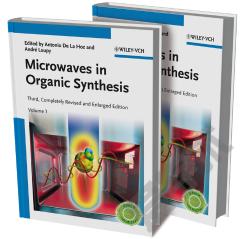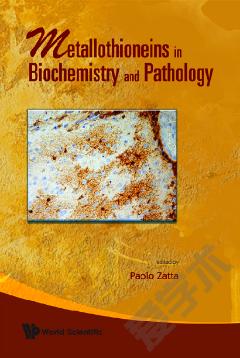Microwaves in Organic and Medicinal Chemistry
Preface. Personal Foreword. 1. Introduction: Microwave Synthesis in Perspective. 1.1 Microwave Synthesis and Medicinal Chemistry. 1.2 Microwave: Assisted Organic Synthesis (MAOS) - A Brief History. 1.3 Scope and Organization of the Book. 2. Microwave Theory. 2.1 Microwave Radiation. 2.2 Microwave Dielectric Heating. 2.3 Dielectric Properties. 2.4 Microwave Versus Conventional Thermal Heating. 2.5 Microwave Effects. 2.5.1 Thermal Effects (Kinetics). 2.5.2 Specific Microwave Effects. 2.5.3 Non-Thermal (Athermal) Microwave Effects. 3. Equipment Review. 3.1 Introduction. 3.2 Domestic Microwave Ovens. 3.3 Dedicated Microwave Reactors for Organic Synthesis. 3.4 Multimode Instruments. 3.4.1 Milestone s.r.1. 3.4.2 CEM Corporation. 3.4.3 Biotage AB. 3.4.4 Anton Paar GmbH. 3.5 Single-Model Instruments. 3.5.1 Biotage AB. 3.5.2 CEM Corporation. 3.6 Discussion. 4. Microwave Processing Techniques. 4.1 Solvent-Free Reactions. 4.2 Phase-Transfer Catalysis. 4.3 Reactions Using Solvents. 4.3.1 Open-versus Closed-Vessel Conditions. 4.3.2 Pre-Pressurized Reaction Vessels. 4.3.3 Non-Classical Solvents. 4.4 Parallel Processing. 4.5 Scale-Up in Batch and Continuous-Flow. 5. Starting with Microwave Chemistry. 5.1 Why Use Microwave Reactors? 5.2 Translating Conventionally Heated Methods. 5.2.1 Open and Closed Vessels? 5.2.2 Choice of Solvent. 5.2.3 Temperature and Time. 5.2.4 Microwave Instrument Software. 5.3 Reaction Optimization and Library Generation - A Case Study. 5.3.1 Choice of Solvent. 5.3.2 Catalyst Selection. 5.3.3 Time and Temperature. 5.3.4 Reinvestigation by a "Design of Experiments" Approach. 5.3.5 Optimization for Troublesome Building Block Combinations. 5.3.6 Automated Sequential Library Production. 5.4 Limitations and Safety Aspects. 6. Literature Survey Part A: General Organic Synthesis. 6.1 Transition Metal-Catalyzed Carbon-Carbon Bond Formations. 6.1.1 Heck Reactions. 6.1.2 Suzuki Reactions. 6.1.3 Sonogashira Reactions. 6.1.4 Stille Reactions. 6.1.5 Negishi, Kumada, and Related Reactions. 6.1.6 Carbonylation Reactions. 6.1.7 Asymmetric Allylic Alkyations. 6.1.8 Miscellaneous Carbon-Carbon Bond-Forming Reactions. 6.2 Transition Metal-Catalyzed Carbon-Heteroatom Bond Formations. 6.2.1 Buchwald-Hartwig Reactions. 6.2.2 Ullmann Condensation Reactions. 6.2.3 Miscellaneous Carbon-Heteroatom Bond-Forming Reactions. 6.3 Other Transition Metal-Mediated Processes. 6.3.1 Ring Closing Metathesis. 6.3.2 Pauson-Khand Reactions. 6.3.3 Carbon-Hydrogen Bond Activation. 6.3.4 Miscellaneous Reactions. 6.4 Rearrangement Reactions. 6.4.1 Claisen Rearrangements. 6.4.2 Domino/Tandem Claisen Rearrangements. 6.4.3 Squaric Acid-Vinylketene Rearrangements. 6.4.4 Vinylcyclobutane-Cyclohexene Rearrangements. 6.4.5 Miscellaneous Rearrangements. 6.5 Diels-Alder Cycloaddition Reactions. 6.6 Oxidations. 6.7 Catalytic Transfer Hydrogenations. 6.8 Mitsunobu Reactions. 6.9 Glycosylation Reactions and Related Carbohydrate-Based Transformations. 6.10 Multicomponent Reactions. 6.11 Alkylation Reactions. 6.12 Nucleophilic Aromatic Substitutions. 6.13 Ring-Opening Reactions. 6.13.1 Cyclopropane Ring-Opening. 6.13.2 Aziridine Ring-Openings. 6.13.3 Epoxide Ring-Opening. 6.14 Addition and Elimination Reactions. 6.14.1 Michael Additions. 6.14.2 Addition to Alkenes. 6.14.3 Addition to Alkenes. 6.14.4 Addition to Nitriles. 6.15 Substitution Reactions. 6.16 Enamine and Imine Formations. 6.17 Reductive Aminations. 6.18 Ester and Amide Formation. 6.19 Decarboxylation Reactions. 6.20 Free Radical Reactions. 6.21 Protection/Deprotection Chemistry. 6.22 Preparation of Isotopically Labeled Compounds. 6.23 Miscellaneous Transformations. 6.24 Heterocycle Synthesis. 6.24.1 Three-Membered Heterocycles with One Heteroaton. 6.24.2 Four-Membered Heterocycles with One Heteroatom. 6.24.3 Five-Membered Heterocycles with One Heteroatom. 6.24.4 Five-Membered Heterocycles with Two Heteroatom. 6.24.5 Five-Membered Heterocycles with Three Heteroatom. 6.24.6 Five-Membered Heterocycles with Four Heteroatom. 6.24.7 Six-Membered Heterocycles with One Heteroatom. 6.24.8 Six-Membered Heterocycles with Two Heteroatom. 6.24.9 Six-Membered Heterocycles with Three Heteroatom. 6.24.10 Larger Heterocyclic and Polycyclic Ring Systems. 7. Literature Survey Part B: Combinatorial Chemistry and High-Throughput Organic Synthesis. 7.1 Solid-Phase Organic Synthesis. 7.1.1 Combinatorial Chemistry and Solid-Phase Organic Synthesis. 7.1.2 Microwave Chemistry and Solid-Phase Organic Synthesis. 7.1.3 Peptide Synthesis and Related Examples. 7.1.4 Resin Functionalization. 7.1.5 Transition Metal Catalysis. 7.1.6 Substitution Reactions. 7.1.7 Multicomponent Chemistry. 7.1.8 Microwave-Assisted Condensation Reactions. 7.1.9 Rearrangements. 7.1.10 Cleavage Reactions. 7.1.11 Miscellaneous. 7.2 Soluble Polymer-Supported Synthesis. 7.3 Fluorous Phase Organic Synthesis. 7.4 Grafted Ionic Liquid-Phase-Supported Synthesis. 7.5 Polymer-Supported Reagents. 7.6 Polymer-Supported Catalysts. 7.6.1 Catalysts on Polymeric Supports. 7.6.2 Silica-Grafted Catalysts. 7.6.3 Catalysts Immobilized on Glass. 7.6.4 Catalysts Immobilized on Carbon. 7.6.5 Miscellaneous. 7.7 Polymer-Supported Scavengers. 8. Outlook and Conclusions. Index.
{{comment.content}}








 京公网安备 11010802027623号
京公网安备 11010802027623号